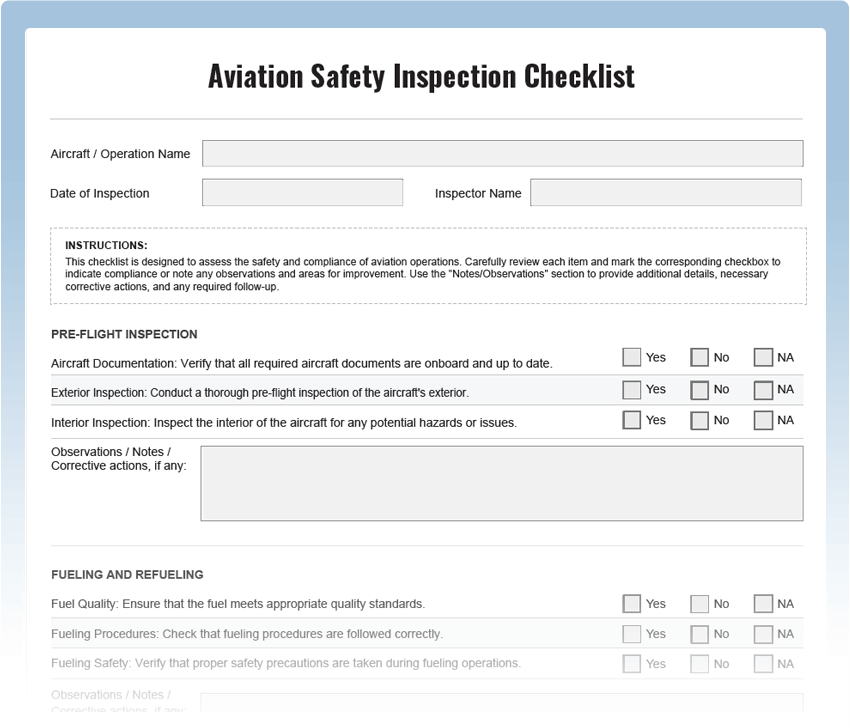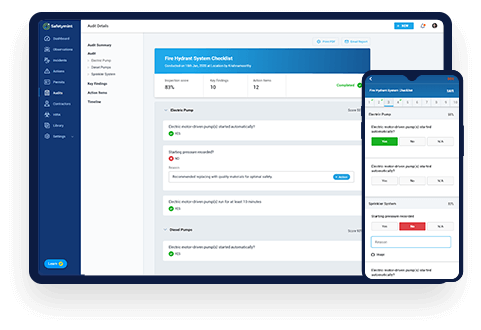Aviation Safety Inspection Checklist
Ensure the highest level of safety in aviation operations with our comprehensive Aviation Safety Inspection Checklist. This free PDF template covers all critical aspects of aviation safety, empowering you to identify potential hazards, perform regular inspections, and maintain a secure environment for passengers and crew.
Digitize this Checklist on Safetymint
- Create unlimited, customized checklists
- Add Actions, with automated reminders
- Works seamlessly with or without internet
- Access via web browsers, mobile or tablets

What is an Aviation Safety Inspection Checklist?
An Aviation Safety Inspection Checklist is a systematic tool used to assess the safety conditions of aircraft and aviation operations. It includes a series of checkpoints designed to inspect various aspects of aviation safety, such as aircraft maintenance, ground operations, emergency equipment, crew training, and more. Regular aviation safety inspections are essential for preventing accidents and incidents, ensuring regulatory compliance, and upholding the highest safety standards in aviation.
Key Areas to Inspect for Aviation Safety:
- Aircraft Exterior: Check the exterior of the aircraft for any signs of damage or wear.
- Cockpit and Avionics: Inspect the cockpit instruments and avionics for proper functionality.
- Emergency Equipment: Verify the availability and condition of emergency equipment, such as life vests, escape slides, and fire extinguishers.
- Ground Handling Procedures: Evaluate ground operations, including fueling, loading, and passenger boarding.
- Crew Training and Qualifications: Ensure that all flight crew members are properly trained and qualified.
- Maintenance Records: Review aircraft maintenance records for compliance and recent inspections.
Common Aviation Safety Inspection Findings:
- Frequent issues found during aviation safety inspections include:
- Unserviceable Equipment: Emergency equipment that is damaged or inoperable.
- Incomplete Documentation: Missing or outdated maintenance records and logbooks.
- Inadequate Training: Crew members lacking necessary training or recurrent training.
Aviation Safety Inspection Best Practices:
- Scheduled Inspections: Conduct routine aviation safety inspections at scheduled intervals.
- Safety Management System (SMS): Implement an SMS for continuous safety improvement.
- Risk Assessment: Perform risk assessments before flights and during operations.
- Compliance with Regulations: Ensure compliance with aviation regulatory authorities’ requirements.
- Incident Reporting: Encourage timely reporting and investigation of safety incidents.




